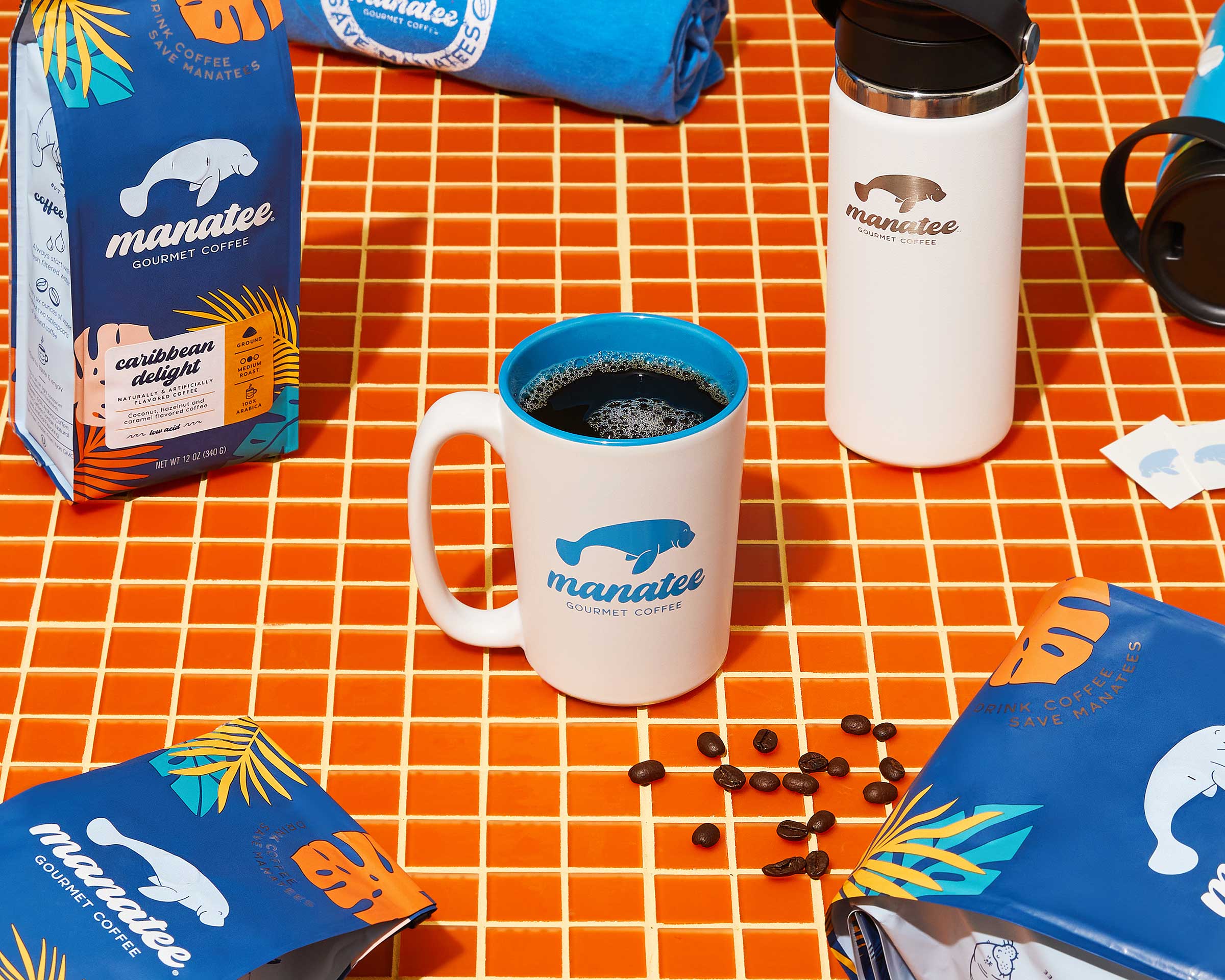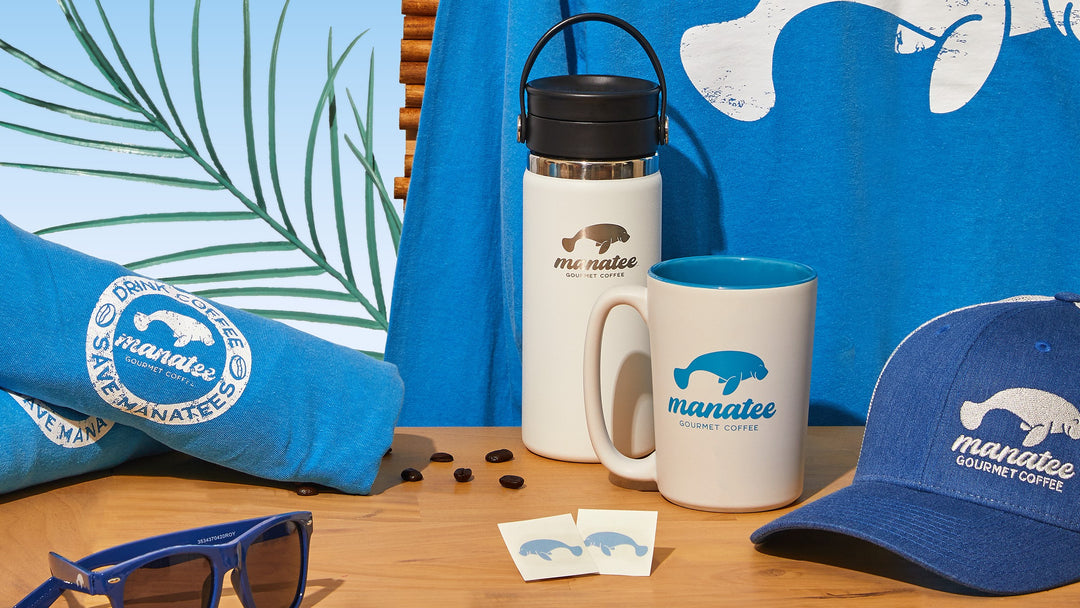Save the Manatee Club (SMC) has received many calls, comments and questions in regard to the loss of seagrass, algae blooms, and increased manatee mortalities in Florida. We encourage you to share your stories and your photographs with your online network of contacts and with your elected officials at the local, state, and federal levels. Please ask for their help in healing our waters.

Trouble for Manatees in the Indian River Lagoon
As the direct result of human derelictions over many decades, the Indian River Lagoon (IRL) on the East Coast of Florida has suffered a series of harmful algal blooms, leading to massive losses in seagrass coverage and, in turn, the recent deaths of a heart-rending number of manatees.
Manatees gathering at warm water locations such as powerplants along the IRL have faced an additional threat during the 2020-2021 winter season as there has been very little seagrass or vegetation for them to eat in the immediate vicinity. Traveling further for forage would mean deadly exposure to cold water, so the manatees ultimately choose to forgo feeding over dying from the cold. See more in our opinion editorial: A State of Emergency for Manatees in the Indian River Lagoon and Beyond.
Excessive human-produced nutrient pollution is a growing threat to all seagrass communities. When combined with the warming effects of climate change and sea level rise, these excess nutrients present an even greater danger to the future of seagrasses wherever they are found.
Before the IRL can be functionally restored, it will be necessary to prevent new sources of nutrient pollution from entering the lagoon as well as strategically removing or sequestering legacy nutrients to make them unavailable as a source of new Harmful Algal Blooms (HAB). Ideally, seagrasses will begin to reestablish on their own, but the process may be facilitated through the restoration of filter feeding organisms and selective pilot seagrass restoration projects. Ultimately, we must reverse those conditions that lead to the loss of seagrasses in the first place if we are going to restore seagrasses.

Save the Manatee Club’s Work
Save the Manatee Club helped fund the distribution of the Marine Resource’s Council Indian River Lagoon Report Card that shares data about the state of the IRL.
- In February 2021, Save the Manatee Club funded an aerial survey of the IRL to study seagrass coverage and manatee populations throughout the area.
- Save the Manatee Club participates as a charter member of the Manatee Rescue and Rehabilitation Partnership (MRP). SMC has worked with partners to release rehabilitated manatees at Blue Spring State Park this winter, as an alternative to the IRL area, for a safe, warm site with plenty of vegetation. SMC also sponsors many partner efforts in the MRP by providing equipment and funding.
- Save the Manatee Club has a long and continuing history of working with the state of Florida to develop stronger Basin Management Action Plans (BMAPs), which are “blueprints” for restoring impaired waters by reducing pollutant loadings. SMC advocates for more conservative Minimum Flows and Levels (MFLs), which help protect water resources from significant harm from water withdrawals, as well as waterway restoration plans.
- SMC is also working on stronger protections for manatees and their aquatic habitat throughout the state of Florida and on federal clean water and endangered species protections, including a history of legal actions that have won stronger protections when responsible agencies fail to act in accordance with the law. See our March 2016 op-ed: Threats to Manatees and Habitat on the Rise.
- Save the Manatee Club has increased public awareness of these issues through numerous interviews and media coverage. See their News page for more.
- SMC is actively working to support additional federal and state funding for contingency planning as well as research and the implementation of additional emergency holding capacity for treating sick and injured manatees as well as the staffing and equipment necessary to rescue every manatee in need.
What You Can Do
Please get involved with local nonprofit groups in your area to help address these issues. Clean water and a healthy environment are not just an environmental matter. Dirty water is a threat to health; to our economy; and to the quality of life for humans and other species. Please also take the following actions and send messages to your elected leaders.

Report distressed, sick, injured or dead manatees at 1-888-404-FWCC (3922) or use VHF Channel 16 on your marine radio. You can also download the free FWC Reporter App on your smartphone or tablet.
- Please don’t feed or give manatees water. Giving food or water to manatees is illegal and teaches them to associate people and/or boats with handouts, which changes their behavior and puts them in harm’s way. Any “feeding events” on social media have not been approved by state or federal government.
- Please click the following link to write to Governor DeSantis and urge him to support the Florida Fish and Wildlife Conservation Commission in its role as the lead coordinator of the Manatee Rescue and Rehabilitation Partnership.
- You can also click the following link to urge President Biden to press the U.S. Fish and Wildlife Service to do more to come to the aid of manatees and the Indian River Lagoon. Click the following link to contact the U.S. Fish and Wildlife Service and ask them to investigate the situation in the Indian River Lagoon and develop contingency plans to avoid future mortality events.
- Write to your elected officials and voice your concerns. Enter your address online to find your state and U.S. congressional representative as well as your state and U.S. senators. Share your videos and photos with them. Urge your U.S. senator and representative to ask the U.S. Fish and Wildlife Service to investigate the situation in the Indian River Lagoon.
- Sign the Now or Neverglades Declaration.
- Click the following links to watch this short video from the Everglades Trust and urge Governor Ron DeSantis and Agriculture Commissioner Nikki Fried to stop the toxic discharges to the coasts and send more clean water south to the Everglades. Ask that they support stronger nutrient restoration plans for ALL Florida waterways.
- Write a letter to the editor of your local newspaper and share your thoughts and concerns.
- Sign up for Save the Manatee Club’s free Action Alerts.
- Donate to help sick and injured manatees by contributing to our Emergency Rescue Fund.
Get More Info
- See the Marine Resource’s Council Indian River Lagoon Report Card
-
Manatee Mortality Event Along The East Coast: 2020-2021
Florida Fish and Wildlife Conservation Commission
This article was originally published by Save the Manatee Club.
500 N. Maitland Ave., Suite 210, Maitland, FL 32751
Phone: 1-800-432-5646 | 407-539-0990









